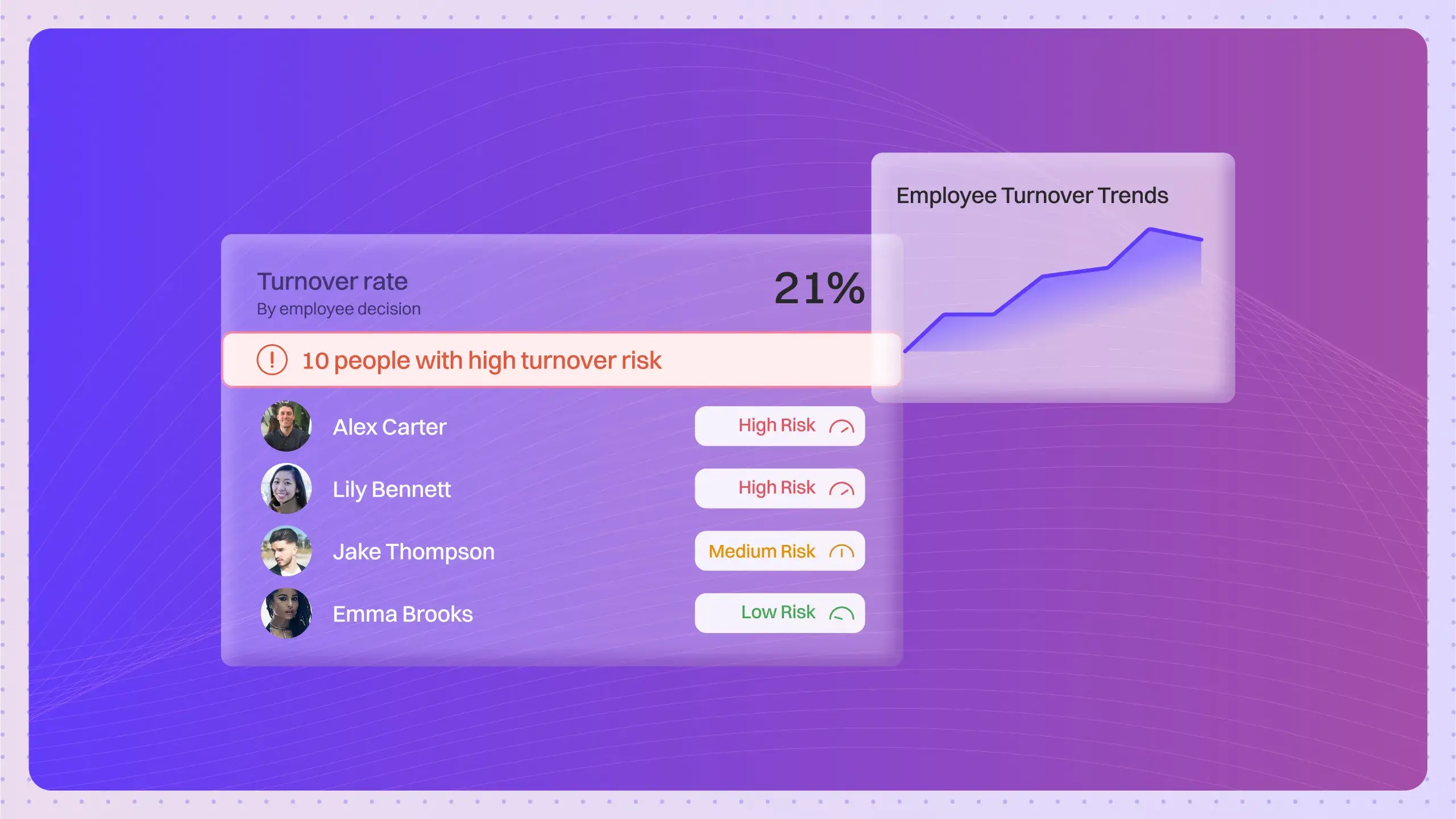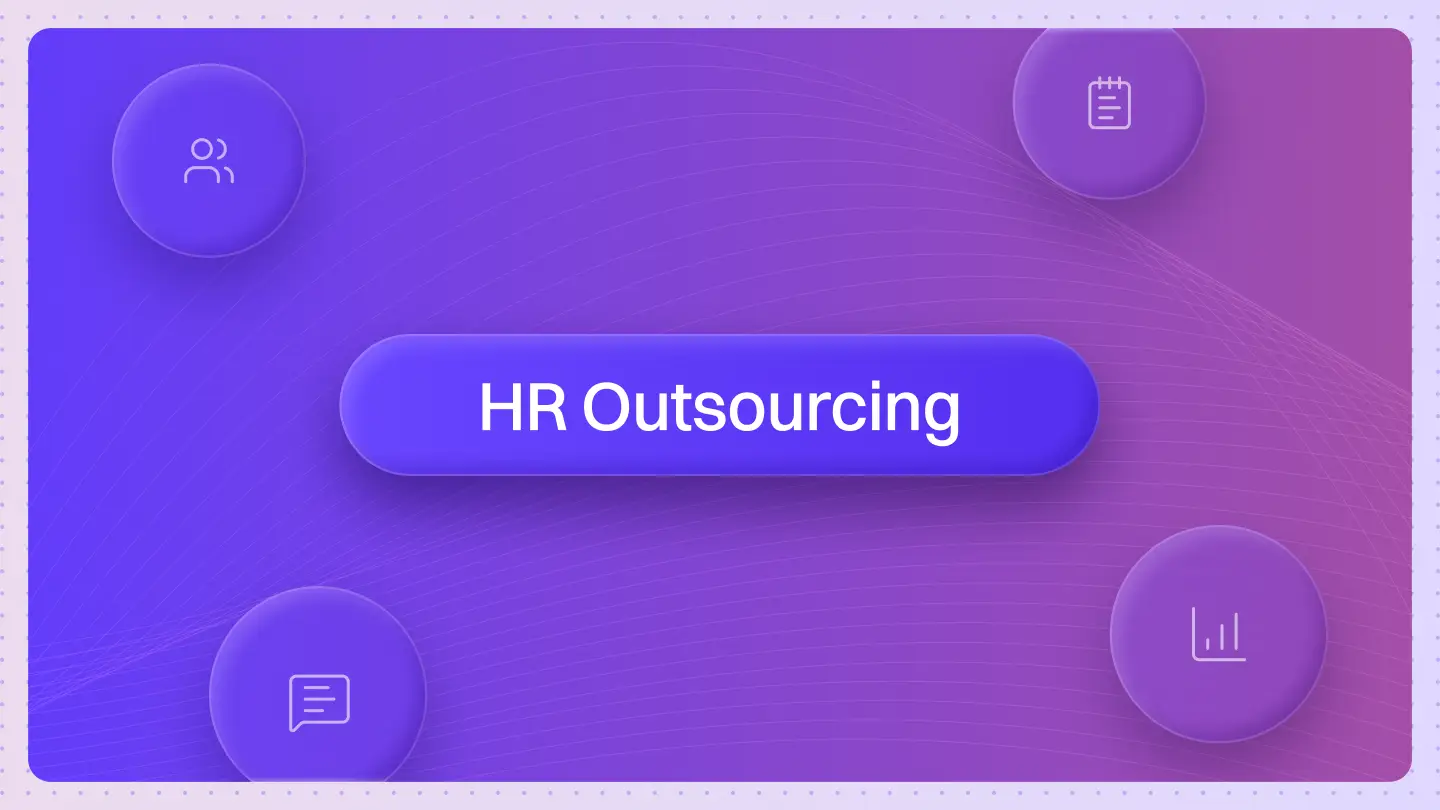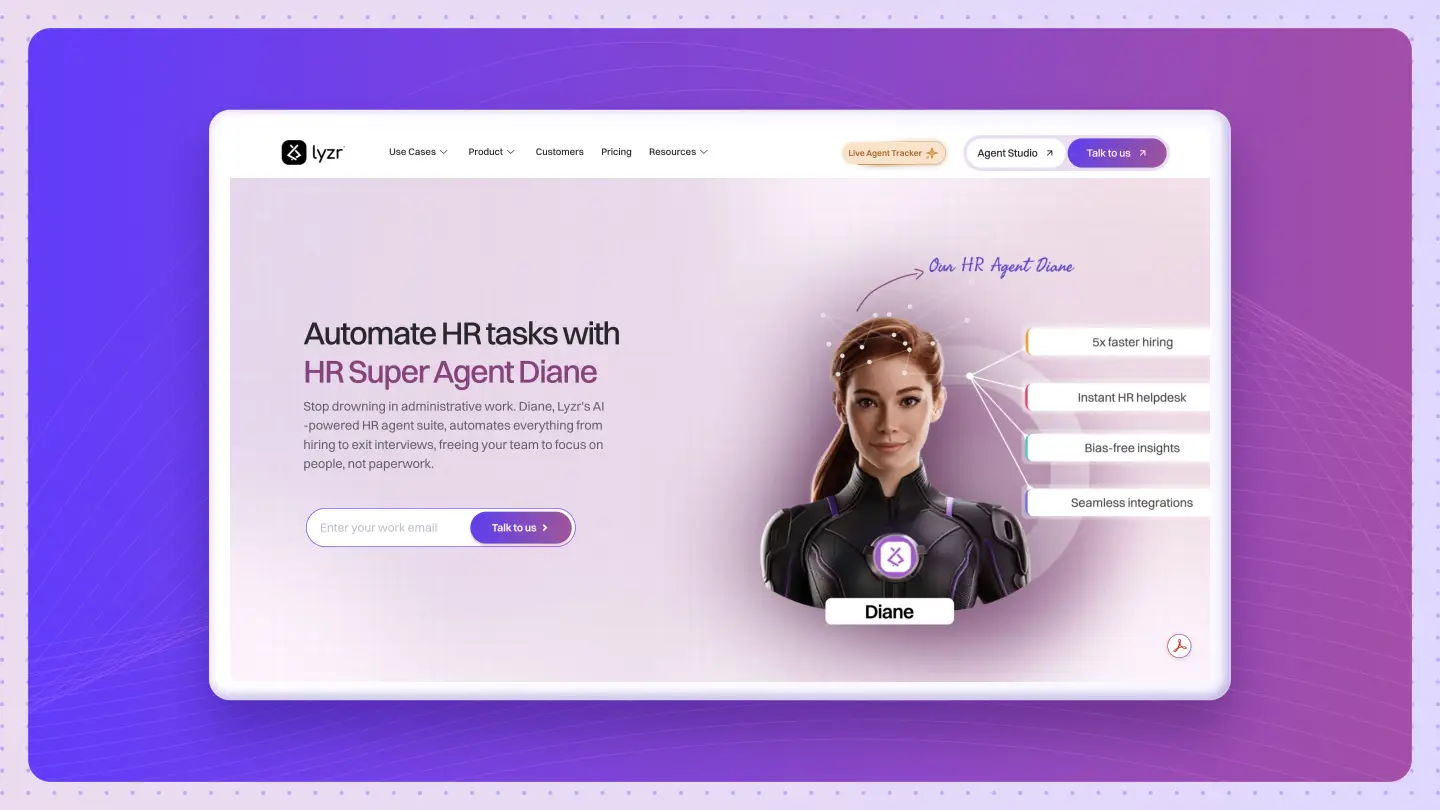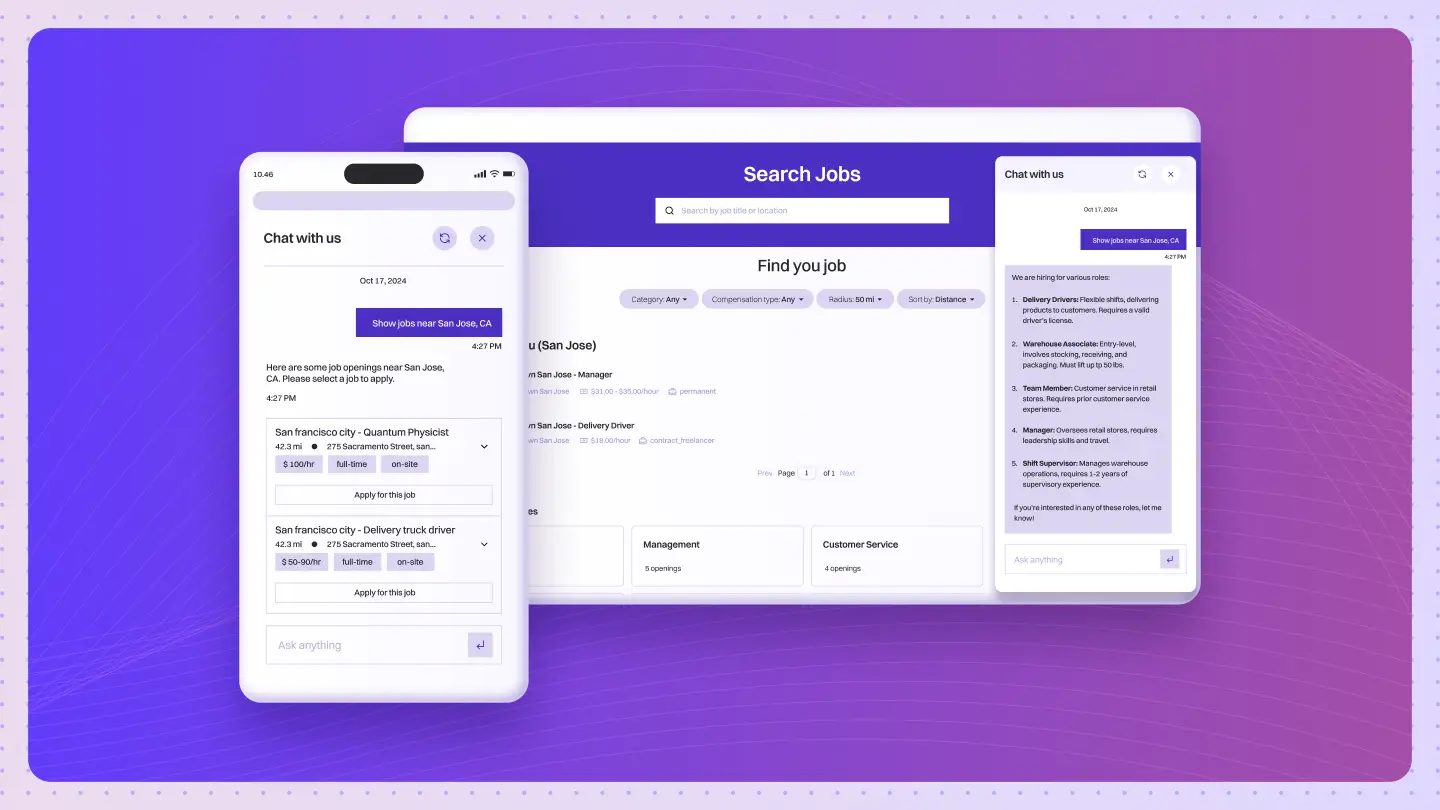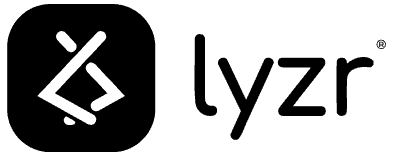Table of Contents
ToggleThe true purpose of HR is to be the architect of the organization.
Their role is to design the blueprint for a winning culture, source the best materials for the job, and ensure the entire structure is sound, from the foundation to the final floor.
But what happens when the architect is forced to spend their days inspecting every single brick, knowing 88% of them are unusable?
What happens when the project stalls for weeks over paperwork, and the best materials are taken by faster, more efficient builders?
The structure weakens.
This is the story of AI in HR today.
Studies reveal that over 20% of labor input in many industries is consumed by compliance and inefficient practices, reducing these costs could boost productivity by 8%. How do we break this cycle? How do we give the architects back their blueprint?
The conventional answer has always been to add more processes or hire more people. But this alternative view is gaining ground: what if the problem is not the workers, but the outdated tools they are forced to use? This raises a skeptical but fair question. Is AI just another complex tool promising a revolution, or is it something fundamentally different?
Artificial intelligence is the answer to that question. It is not just a better power tool; it is an entirely new method of building. AI automates the inspection, manages the logistics, and stress-tests the design in real time. It does not replace the architect. It liberates them to finally do their job.
This liberation is not a futuristic promise, it is a practical shift happening right now.
The Quiet Trade Happening in HR Right Now
The proof of this transition is clear and measurable. A recent survey reveals that the overwhelming majority of organizations have already committed to this new way of working.
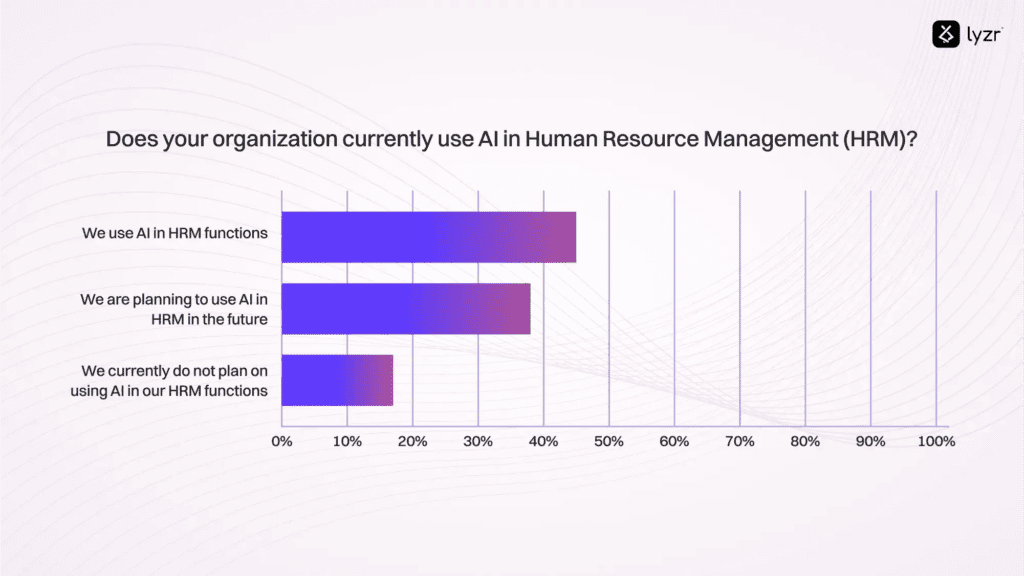
As the data shows, about 85% of companies are either using AI in their HR functions today or are actively planning to. The adoption is happening across the entire blueprint of the organization, but it is most concentrated in five key areas:
- Foundational Administration: Automating employee records (78%) and payroll (77%).
- Talent Acquisition: Streamlining recruitment and hiring (73%).
- Employee Lifecycle: Enhancing performance management (72%) and onboarding (69%).
This shows that architects are using AI for more than just administrative support. They are applying it to the core, strategic functions that define how an organization hires, manages, and grows its people.
This rapid move into the heart of HR strategy raises a critical question: what is the true driving force behind it?
Why Every HR Leader is Suddenly Talking About AI?
The answer is a powerful combination of necessity and opportunity.
The necessity is survival. A recent leadership survey found that 76% of HR leaders believe their organizations will lose their competitive edge if they fail to adopt AI within the next two years. This is no longer a casual choice; it has become a clear mandate from the top.
But this is not just a defensive strategy. The goals for implementing AI are ambitious and focused on growth, as this data from HR leaders shows.
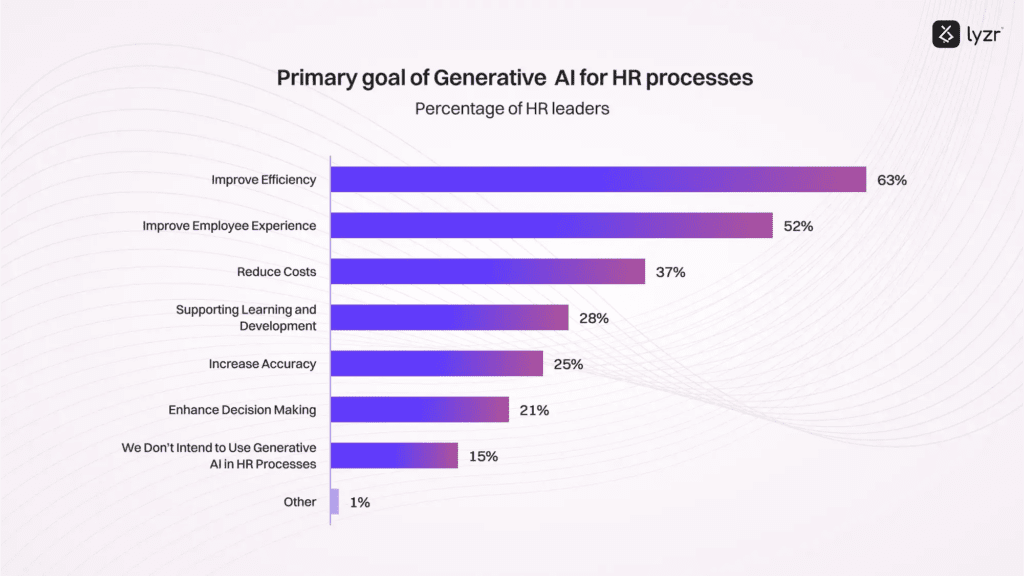
The priorities are clear. While operational goals like efficiency and cost reduction are at the top of the list, the drive to improve the employee experience is an equally powerful motivator. This data shows a balanced approach: leaders are using AI to build organizations that are not just more profitable, but better places to work.
This brings us to the practical question: How are the best HR architects actually implementing these tools on the ground?
So, How Are the Best HR Teams Actually Using AI?
With a clear mandate, the modern HR architect is no longer just planning; they are actively rebuilding. They are not starting with minor renovations. Instead, they are applying AI directly to the most critical, and often most broken parts of the old blueprint. Performance management, once the universally dreaded annual ritual, now tops the list of areas for AI innovation.
The data on where leaders plan to increase their use of AI reveals a clear, two-pronged strategy.
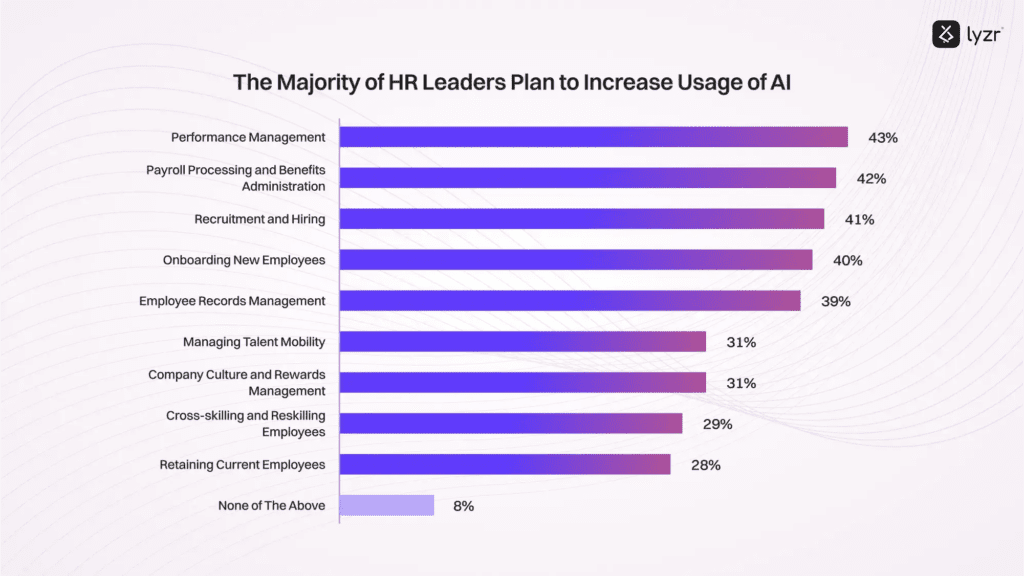
First, they are reinforcing the core operational engines of the business: performance management (43%), payroll (42%), and hiring (41%). This is about creating a stable, efficient foundation. At the same time, they are looking ahead, using AI to solve more complex challenges like talent mobility (31%) and employee retention (28%).
This is the high-level strategy. Now, let us move from the blueprint to the build itself. We will explore the five key areas where these new tools are fundamentally changing the work of HR.
1. Sourcing the Best Materials: AI in Recruiting and Hiring
Every great structure begins with high-quality materials. For the organizational architect, this means recruiting and hiring the right people. Historically, this has been a slow, manual process of sifting through mountains of resumes, a delay that allows the best candidates to be snapped up by faster competitors.
AI transforms this broken process from a manual chore into an intelligent workflow. It automates the most time-consuming parts of recruitment, freeing leaders to focus on strategy. As the data on HR’s most-used AI applications shows, the impact is focused on critical tasks.
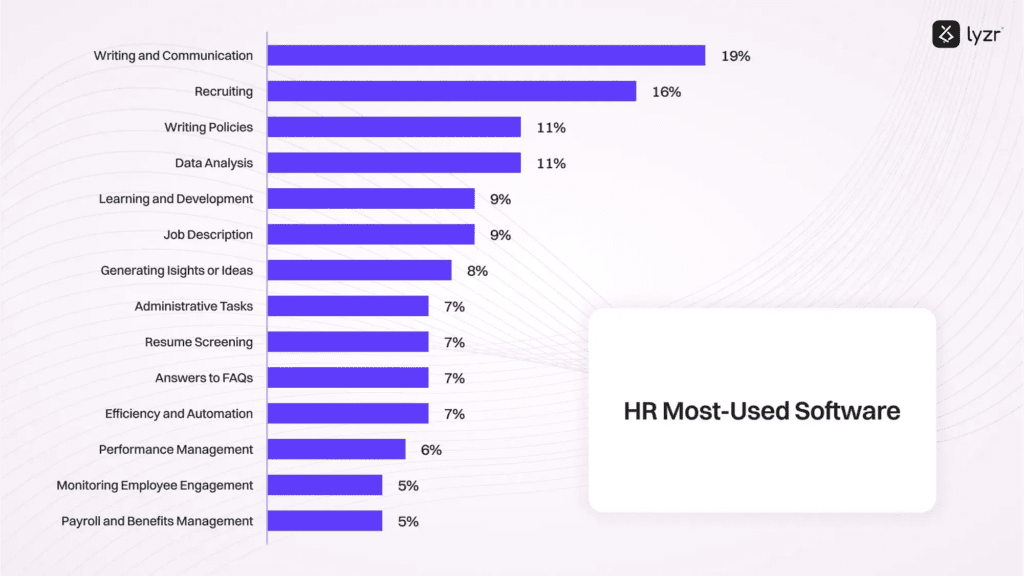
The top applications directly address the biggest bottlenecks in hiring:
- Writing and Communication (19%): Generating effective job descriptions and engaging with candidates instantly.
- Recruiting (16%): Proactively sourcing and identifying the best potential fits.
- Resume Screening (7%): Automating the initial, high-volume review process.
Instead of wrestling with a blank page to perfect a job description (an art form in itself), managers now generate targeted posts in seconds. Instead of leaving candidates waiting, AI chatbots provide instant engagement. The result is a faster, smarter process that allows the architect to spend less time sifting through materials and more time choosing the best ones.
2. Monitoring Structural Integrity: Employee Feedback
A building is only as strong as its weakest point. A wise architect installs a network of sensors to monitor stress across the entire structure. For an organization, this sensor network is its employee feedback system. The natural fear is that automating this system will lead to robotic, tone-deaf replies to genuine human concerns. No one wants their feedback answered by a chatbot that sounds like it’s trying to sell them an extended warranty.
This is a misunderstanding of AI’s proper role. The goal is not to replace empathy, but to scale it. An AI agent can analyze thousands of comments, identify critical trends across the organization, and suggest thoughtful, human-sounding starting points for a response.
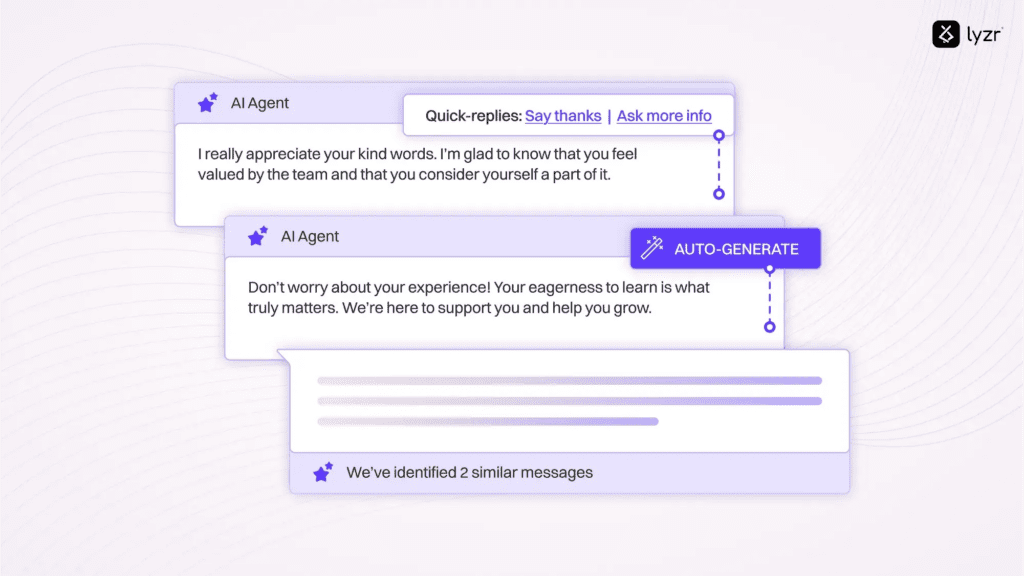
By handling the initial analysis and drafting, the AI acts as an intelligent assistant. It ensures every piece of feedback is acknowledged quickly while highlighting the most urgent issues that require a human touch. This frees the architect to spend less time reading every minor sensor alert and more time reinforcing the parts of the structure that truly need their attention.
3. The Diagnostic Dashboard: AI in People Analytics
A sensor network is useless without a central dashboard to make sense of the data. For the organizational architect, People Analytics is this diagnostic dashboard. In the past, getting answers meant filing a ticket and waiting for an analyst to pull a report, a process that felt a bit like sending a message in a bottle and hoping for a reply.
AI transforms the dashboard from a static report into a dynamic conversation. Instead of digging through spreadsheets, the architect can now simply ask their AI agent critical questions directly.
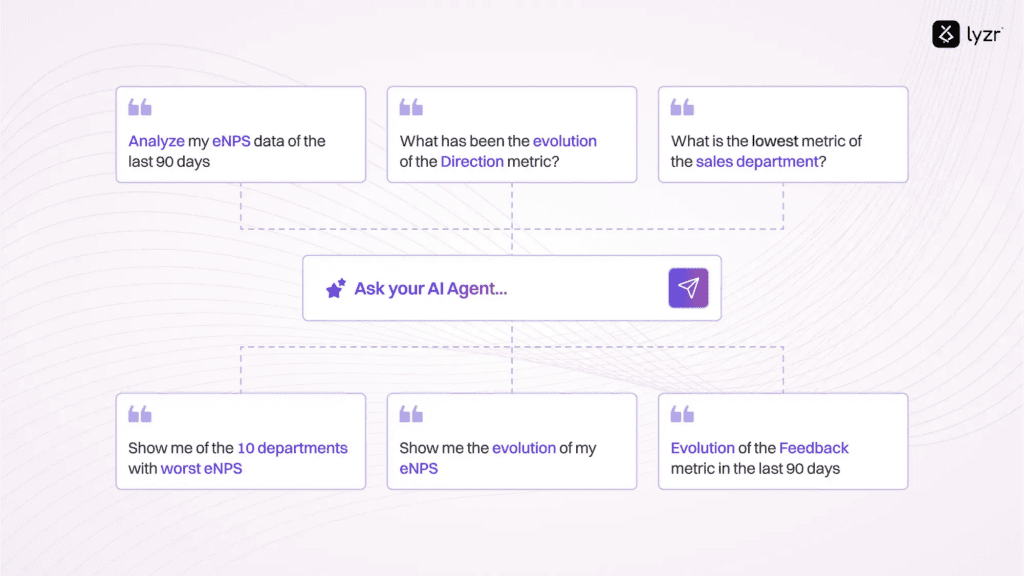
This conversational approach allows leaders to move at the speed of thought. They can get immediate answers to complex questions like, “What is our projected employee turnover for next quarter?” or “Which department has the lowest engagement score?” They can spot trends, compare metrics, and diagnose the root cause of a problem in seconds, not weeks.
This is a profound shift. It allows the architect to move from reacting to old data to proactively managing the health of the structure. They can now predict weaknesses before they become critical and make decisions based on real-time intelligence, not last quarter’s summary.
4. Calibrating the Structure: AI in Performance Reviews
Beyond the high-level dashboard, a diligent architect must also conduct deep inspections of the core pillars holding up the structure. This is the role of the performance review. Historically, this has often been a dreaded process, driven by subjective feelings and inconsistent standards, where the quality of a review could depend more on a manager’s writing ability than an employee’s actual performance.
AI transforms this subjective chore into a more objective analysis. Its most powerful role is to act as a calibration tool, ensuring fairness and consistency across the organization. By compiling peer feedback and analyzing performance data, the AI provides a balanced, data-driven summary for the manager to build upon.
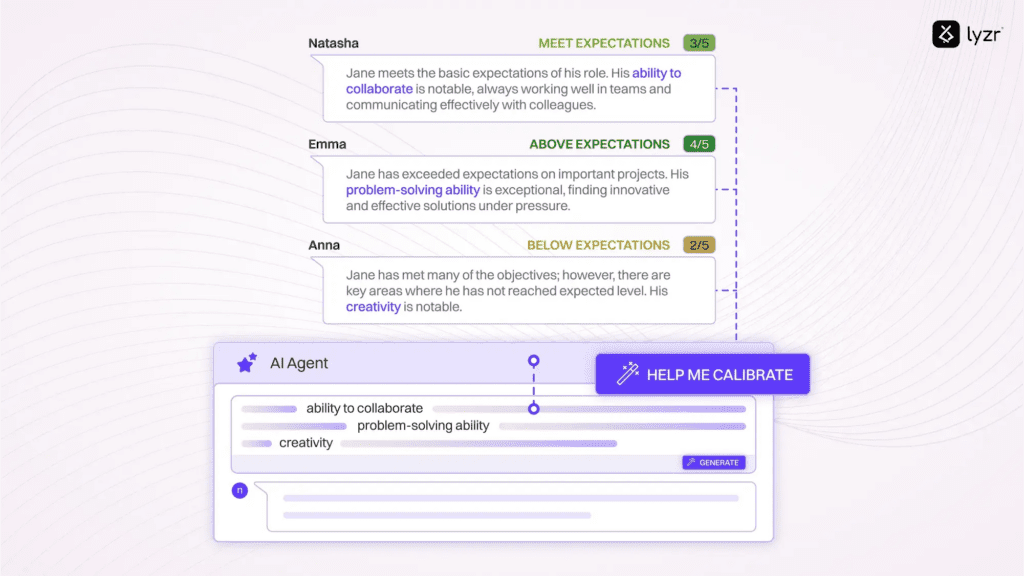
As the image suggests, the AI helps managers calibrate their assessments against clear, consistent criteria. Instead of starting with a blank document and their own personal biases, managers can generate detailed, constructive feedback that is rooted in evidence. This saves time, but more importantly, it elevates the quality and integrity of the entire process.
The result is a more meaningful review cycle. With the administrative burden removed and a baseline of objectivity established, managers can focus their energy on the truly human element: coaching, identifying growth opportunities, and having the strategic conversations that strengthen their teams.
5. Future-Proofing the Structure: Learning & Development
A great architect does not just build for today; they build for the future. This means constantly reinforcing and retrofitting the structure to handle new challenges. In an organization, this is the role of Learning & Development (L&D). For too long, this meant one-size-fits-all corporate training, the kind of generic, mandatory seminar that is often forgotten by lunchtime.
AI dismantles this outdated model and replaces it with a dynamic, personalized learning ecosystem. Instead of pushing generic courses, an AI-powered system assesses each employee’s unique skills and career goals. It then curates a custom learning path, pulling relevant content from thousands of sources and delivering it in a way that fits the individual’s needs.

As this workflow demonstrates, the system is intelligent and interconnected. It tracks progress, evaluates knowledge retention, and feeds insights back to both the employee and HR leadership. This creates a continuous loop of development that ensures the organization’s capabilities are always evolving.
The result is a workforce that is more skilled, more engaged, and more adaptable. By treating employee growth as a personalized, data-driven process, the architect ensures that the structure is not just strong today, but ready for the demands of tomorrow.
This is the theory. But what does this look like in practice? Let’s examine how the world’s leading architects are already using these tools to build better organizations.
But Does It Actually Work? Let’s Look at Real-World Case Studies of AI in HR
Theory is useful, but proof is persuasive. The shift to AI in HR is not a niche movement for small startups; it is being led by some of the largest and most respected companies in the world. The following examples show how global leaders are moving beyond hypothetical benefits to achieve measurable, real-world results.
1. Mastercard: Building a Talent Pipeline at Scale
- The Challenge: Mastercard needed to manage a massive global talent pool, consolidating over 75 local career sites into one unified experience without losing candidates to complexity.
- The AI-Powered Solution: They created an “always on” hiring model, building an intelligent talent community that keeps candidates engaged with personalized campaigns. AI was used to automate the most time-consuming step: interview scheduling.
- The Results:
- The talent community grew tenfold to over 1 million people.
- Interview scheduling time was reduced by 85%.
- Influenced hires increased from 200 to nearly 2,000 in two years.
2. Electrolux: Gaining a Competitive Edge Through Speed
- The Challenge: In a competitive market with a talent shortage, Electrolux needed to accelerate its hiring process to avoid losing top applicants to faster-moving companies.
- The AI-Powered Solution: They implemented AI-driven screening and matching to identify the best candidates faster. Automated scheduling and one-way video interviews eliminated logistical delays and saved significant recruiter time.
- The Results:
- The application conversion rate increased by 84%.
- Time-to-hire was reduced by 9%.
- Recruiters saved 78% of their time on scheduling alone.
3. L’Oréal: Finding the Needle in the Haystack
- The Challenge: L’Oréal’s popular intern program attracted a massive volume of applicants, 12,000 for just 80 spots, making manual screening an almost impossible task.
- The AI-Powered Solution: They leveraged AI agents to manage the top of the funnel. An AI chatbot handled initial screening, while another tool analyzed open-ended question responses to find strong candidates that a simple resume review would have missed.
- The Results:
- Saved 200 hours of recruiter time for a single hiring cycle.
- Improved the ability to identify high-potential candidates based on nuanced insights, not just keywords.
Seeing these results naturally leads to the next logical question: How does an organization actually begin this journey? What are the practical paths for integrating these powerful tools?
How Can You Start? The Three Paths to AI Implementation
Once the decision to build with AI is made, the architect faces a critical choice, not what to build, but how. The path you choose determines your project’s speed, cost, security, and ultimate level of customization. It is the difference between buying a pre-fabricated structure, manufacturing every component yourself, or using a specialized, high-end toolkit. Each path has clear trade-offs.
| Implementation Path | Key Advantages (Pros) | Key Disadvantages (Cons) |
| SaaS AI Tools | Quick to deploy, no coding required, ready-to-use functions. | High long-term costs, external data security risks, provider downtime. |
| Building From Scratch | Complete control, maximum privacy and security. | Requires deep technical expertise, massive infrastructure, years of development. |
| AI Frameworks | Balances security and control with faster deployment. Customizable. | Requires some technical setup, but far less than building from scratch. |
As the comparison shows, the choice is a balance of speed, control, and security. While off-the-shelf SaaS tools offer speed, they come with significant risks to cost and data privacy. Building from scratch offers total control but is prohibitively slow and expensive for most organizations.
For the serious architect, the emerging best practice is the third path. Using an AI framework, such as Lyzr, provides the security and customization of a private build with the speed that modern business demands.
So let’s look inside this new toolkit. How does a platform like Lyzr’s Agent Studio empower the modern HR architect?
A Look Inside the Modern Architect’s Workshop
A powerful strategy requires a well-designed workshop. The Lyzr Agent Studio is the environment where the modern HR architect brings their blueprints to life. It is designed around a single principle: to automate repetitive work, freeing you to focus on the strategic decisions that build a stronger organization.
Here are a few of the specialized tools inside the studio:
Example 1 : Exit Interview Agent
The traditional exit interview is often an exercise in polite fiction. An AI-driven voice agent, however, can create a space for candid, unbiased feedback, allowing the architect to identify and fix hidden structural weaknesses.
This agent helps you:
- Encourage open feedback with a neutral, AI-led conversation.
- Identify hidden trends in why people are leaving.
- Proactively address concerns to improve long-term retention.
Example 2: Job Description Generator Agent
Crafting the perfect job description is a delicate balance of art and science. This agent automates the science, instantly generating clear and effective job descriptions that ensure you are always building from an accurate blueprint.

This agent helps you:
- Generate role-specific descriptions in seconds.
- Define essential skills with precision and clarity.
- Accelerate hiring from the very first step.
Example 3: Resume Screening Agent
Sifting through hundreds of resumes is the definition of manual labor. This agent automates the entire process, acting as an intelligent filter that identifies the best “materials” for the job, allowing you to focus on the final selection.

This agent helps you:
- Instantly identify relevant skills and experience.
- Rank candidates based on your specific job requirements.
- Eliminate manual screening and its associated delays.
But what if the architect had more than just a collection of powerful tools? What if they had a dedicated, autonomous assistant to manage the entire worksite?
Meet Diane, the AI Foreman of Your HR Worksite
Specialized tools are essential, but the greatest leap in productivity comes from having an expert who can manage the entire project. This is the role of Diane, an autonomous AI agent that acts as the architect’s trusted foreman. Diane goes beyond executing single tasks; she manages and connects entire HR processes, from recruitment to retention, freeing human leaders to focus exclusively on high-level strategy.
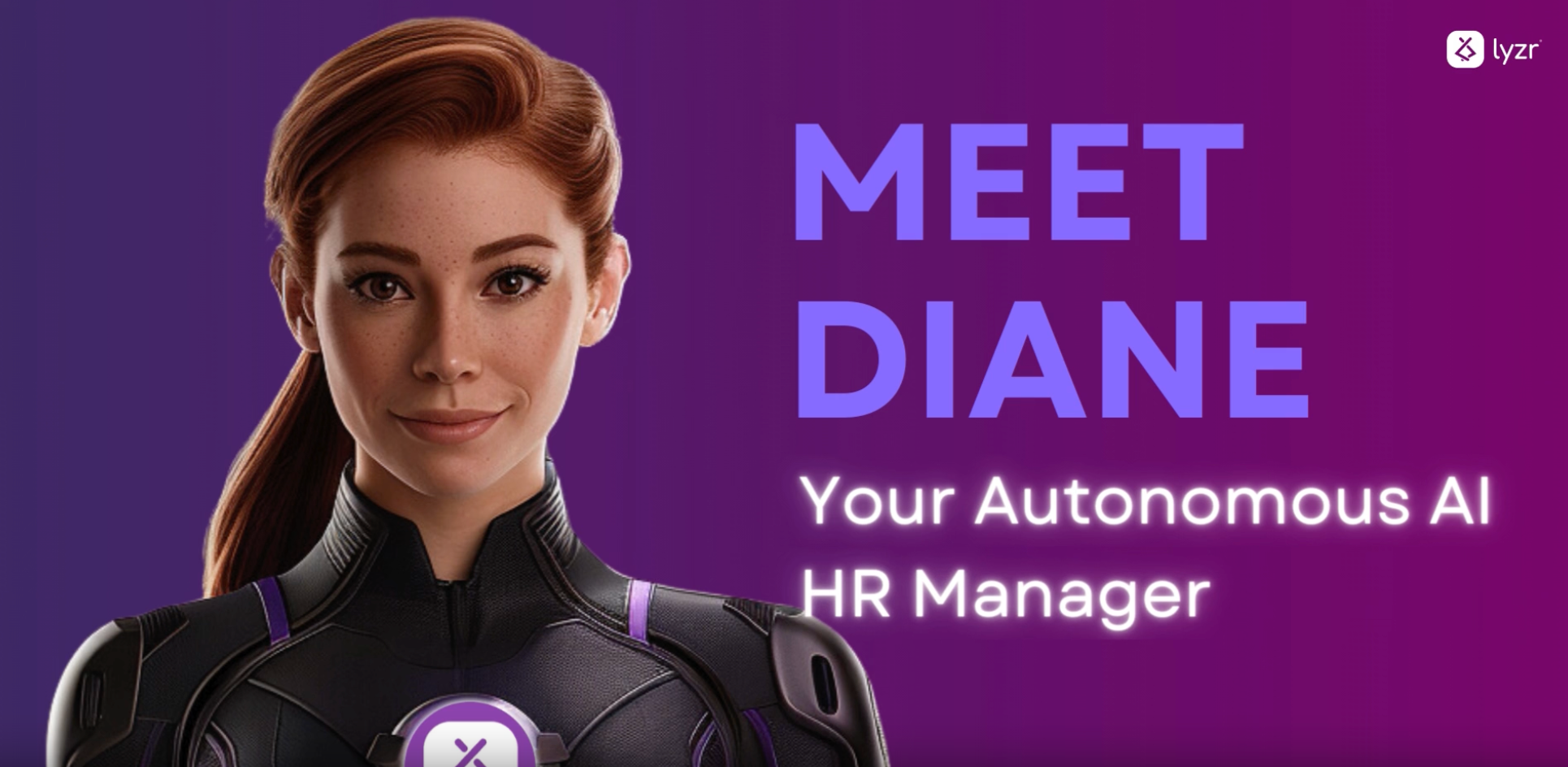
Unlike a simple tool that requires constant human oversight, Diane operates independently to ensure the project runs smoothly. Her core capabilities include:
- Automated Recruitment: Managing the entire hiring workflow, from screening resumes and scheduling interviews to conducting initial assessments.
- Intelligent Employee Management: Handling everything from employee records to performance tracking, ensuring the project’s data is always accurate.
- Real-Time Strategic Insights: Providing the architect with instant analytics to support data-driven decisions about the structure’s health.
The ultimate value of an agent like Diane is the leverage she provides. By entrusting the operational management of HR to a capable AI, the human architect is finally liberated from the worksite’s daily grind. Their time can be reserved for what it was always meant for: designing the future of the organization.
This is the strategic vision. Now, let’s look at a concrete example of how this works in the real world.
From Inefficiency to Impact: A Lyzr Case Study
Our client is a leader in the HR tech space, but their own internal hiring process was ironically slowed by the very manual workflows they help others escape. Their recruitment “architects” faced a trio of classic challenges:
Scheduling Delays: The cumbersome coordination of interviews that led to losing the best candidates.
Vague Requirements: The timeless problem of unclear job descriptions from hiring managers.
Manual Screening: The immense time sink of evaluating candidates one by one.
They solved it with an autonomous hiring workflow.
Using the Lyzr platform, the company designed a custom AI Hiring Assistant to manage the entire workflow. Instead of a human manually pushing the process forward, a chain of AI agents now handles the sequence from start to finish.

As the workflow shows, a JD Creation Agent turns vague notes into a polished job description. A Shortlist Agent screens the applications, a Scheduler Agent coordinates the interviews, and a Feedback Agent collects the results. The human recruiter only steps in for the highest-value work: the final decision.
The impact was immediate and profound.
The new automated structure delivered these results:
- 50% Time Savings: Recruiters cut their administrative overhead in half, freeing them for more strategic tasks.
- Higher Quality Candidates: Clear, AI-generated job descriptions attracted better-fit applicants from the start.
- Improved Candidate Experience: Automated scheduling and timely communication led to higher applicant satisfaction.
This case study is not an endpoint; it is a preview of a much larger shift. It shows what happens when we move from simple automation to true AI-driven strategy.
The Future Isn’t Automation, It’s Autonomy
The story of AI in HR is not really about automating tasks. That is just the first step. The true future is about moving from simple automation to genuine autonomy, where AI agents act less like tools and more like trusted, collaborative partners.
This is the concept of an “agentic workflow.” Imagine an AI HR Manager like Diane not only managing ESAT survey agents, HR Helpdesk agent and handling recruitment but also collaborating with AI agents in sales and marketing to predict future hiring needs. This network of agents works together, sharing insights and optimizing the entire organization’s structure without constant human intervention.
This shift represents the final liberation of the architect. For too long, HR has been unfairly branded as a cost center buried in paperwork. An autonomous, AI-driven system transforms HR into the strategic heart of the business. It frees human leaders to focus entirely on what only they can do: build culture, mentor talent, and design the organization of the future.
The future of HR is not just AI-powered; it is AI-driven and human-led. The first step for any architect is to see the new tools for themselves.
Book a demo and bring AI-driven efficiency to your HR team today.
Frequently Asked Questions (FAQs)
1. So, what exactly is “Generative AI in HR” when you strip away the hype?
Think of it as giving the architect a set of intelligent power tools. Instead of just storing information, Generative AI can create, analyze, and communicate. It’s the technology that allows an AI to write a job description, summarize employee feedback, or analyze engagement data, freeing the human HR leader to make strategic decisions.
2. That’s the big picture. What are some real-world examples of AI in HR today?
It’s being used across the entire blueprint of the organization. The most common applications are in five key areas: recruiting new talent, managing employee feedback, analyzing workforce data, conducting fairer performance reviews, and creating personalized learning and development plans.
3. How does an HR team actually start using AI? What’s the first step?
There are three main paths. You can use simple, off-the-shelf SaaS tools, which are fast but can be risky with data. You can try to build everything from scratch, which is secure but incredibly slow and expensive. The emerging best practice is the middle path: using a secure, private AI framework like Lyzr to build custom solutions quickly.
4. When people talk about “Generative AI technology” for HR, what does that really mean?
It refers to the underlying AI models that can understand and generate human-like text. In practice, this technology is most powerfully applied through AI agents. These are specialized programs designed to handle specific HR workflows, like screening resumes or conducting exit interviews, turning the raw power of the technology into a useful business tool.
5. The ‘Architect’ idea makes sense, but does AI replace the human element of HR?
No. This is the most important point. AI’s true purpose is to handle the repetitive, data-heavy processes so that humans can focus more on the human element. It automates the paperwork so you can have the meaningful conversation. It’s about liberating HR professionals, not replacing them.
6. Can AI really help with the sheer volume of writing HR has to do?
Absolutely. This is one of its greatest strengths. An AI agent can take a few bullet points from a hiring manager and generate a complete, effective job description in seconds. It can draft personalized emails to candidates and summarize meeting notes, freeing up hundreds of hours.
7. Beyond making things faster, what’s the biggest strategic benefit of using AI in HR?
It allows the architect to move from being reactive to being proactive. Instead of just reading last quarter’s report on employee turnover, you can use AI to predict which employees are a flight risk next quarter. It allows you to see the cracks forming in the foundation before they become major problems.
8. Is “Gen AI in HR” just another buzzword, or is this a permanent shift?
All signs point to a permanent, fundamental shift. With over 76% of HR leaders believing that failing to adopt AI will put them at a competitive disadvantage, this is no longer a trend. It’s a new baseline for how modern, efficient, and people-focused organizations are built and run.
9. What’s the real difference between a simple AI tool and an “AI Agent” like Diane?
A simple tool is like a power drill; it does one job well when you tell it to. An autonomous AI agent like Diane is like a worksite foreman; she can manage an entire multi-step workflow on her own. She doesn’t just screen a resume when asked; she manages the entire hiring process from job description to interview scheduling.
10. What does the future of an HR professional’s career look like in a world with AI?
Brighter and more strategic. By handing off the administrative burden to AI assistants, the HR professional is elevated. Their career will be less about managing processes and more about designing culture, mentoring leaders, and acting as the true strategic architect of their organization’s future.
Book A Demo: Click Here
Join our Slack: Click Here
Link to our GitHub: Click Here

